Pickling Spices Recipes
Quick Notes:
What Are Pickling Spices Recipes?
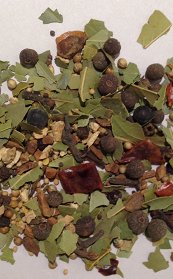 Pickling Spices Blend details
Pickling Spices Blend detailsPickling spices recipes are blended for one of the oldest methods used to preserve foods: Pickling. Pickled food is brined or fermented. Most people think of cucumbers harvested to make dill pickles; however, other fruits (e.g., grapes), vegetables (e.g., tomatoes, beets), and foods (e.g., eggs) are pickled too. See below for a quick simple recipe. Then, click here to learn more about pickling and to get a recipe for reduced-sodium dill pickles >>> North Dakota State University - Pickling Season…
Pictures of Pickled Foods:
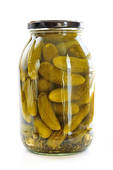
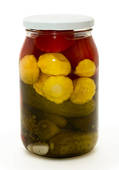
Canning means to preserve foods in bottles and jars (see above).
Although the "canning and pickling season" is conducted throughout the year depending on where in the world you’re located, for you it is whenever you’re doing a lot of harvesting of your garden (typically from early to late summer and early fall). Just depends on what is plentiful in your garden, or is available and cheap at local produce markets.
Pickling Spice Recipe:
Pickling spices can include: cinnamon sticks, mustard seeds, bay leaves, allspice berries, dill seeds, whole cloves, gingerroot, black and white peppercorns, coriander seeds, juniper berries, mace blade, star anise, cardamom seeds, and hot chili peppers.
By blending your pickling spices, which is quick and inexpensive, you can make the mixture just right for your taste buds.
The following recipe makes about 2/3 cup:
4 cinnamon-cassia sticks (3 inches long), cracked up
1 piece dried gingerroot (1 inch long), cracked up
2 tablespoons yellow mustard seeds
2 teaspoon whole allspice berries
2 tablespoons whole black peppercorns
2 teaspoons whole cloves
2 teaspoons dill seeds
2 teaspoons coriander seeds
2 teaspoons mace blade, crumbled
6 bay leaves, crumbled
1 small dried chili pepper (2 inches long), chopped or crumbled including seeds)
Directions:
Wrapped in cheesecloth or a light-weight towel, crush the cinnamon sticks, dried chili pepper, ginger root, and bay leaves with a mallet. Place in a bowl with the remaining ingredients, which some people like to grind up coarsely. Don’t have to though.
Mix thoroughly and store in an airtight jar in a cool dark place for up to one year.
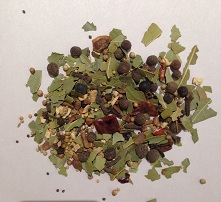 Pickling Spices Blend
Pickling Spices Blend
Some recipes also include Star Anise, Cardamom Seeds, and Juniper Berries
What is Pickling Salt?
What is pickling salt and how does it differ from regular table salt? Pickling salt is fine grain in texture and free of any additives such as anti-caking agents which can make brines cloudy. Regular table salts tend to be a little coarser and usually include anti-caking additives. If you cannot find "Pickling Salt" in your local markets you can use any fine-grain salt that excludes additives.
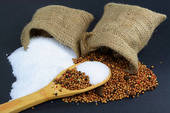
Pickling Spices Are Good for These Foods:
Pickling spices add a tasty zip to canned cucumbers, tomatoes, other vegetables and foods (e.g., eggs, grapes, beets).
The herbs and spices in the pickling blend are similar to those in corned beef blends. So, in small amounts, pickling spices can be used for braised meat dishes.
Return to List of Spices - Herbs from Pickling Spices Recipes
Add Something About This Spice/Herb
Share something you know about this spice/herb. Or, share a favorite recipe using this spice.
Sign up for eZine
Spotlight On Spices!
See Back Issues
Spice Trivia
Do you know these fun facts about spices and herbs?
Black Pepper is the most popular spice in the world
Cumin is the second most popular spice in the world
By weight, Saffron is the most expensive spice in the world.
Vanilla Bean and Cardamom are expensive spices too. Both are hand-harvested and require much manual labor.
Nutmeg is not a nut. It is the seed/pit of a fruit.
The outer lacy covering (aril) on Nutmeg is called mace blade. When in the ground powder form, it is just called "mace"
Cilantro and Coriander are from the same plant. Cilantro is the leaf, and coriander is the seed.
There are almost one million seeds in one pound of Poppy Seeds.





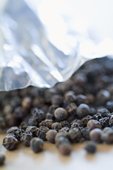
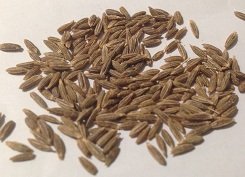

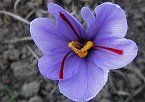
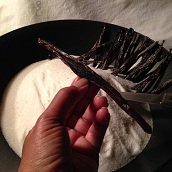
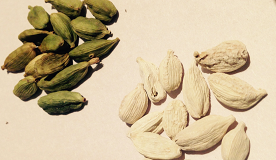
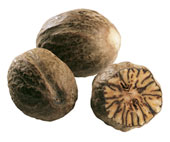
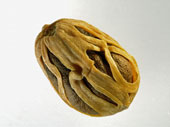
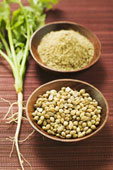
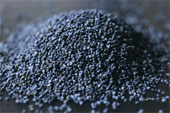
New! Comments
Have something to say about what you just read? Leave me a comment in the box below.